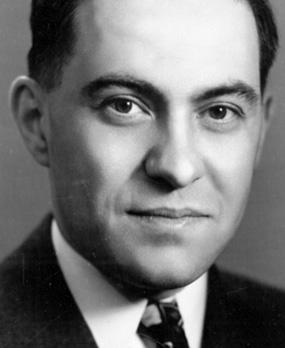Rustad studied under nuclear pioneer Alfred Nier in Minnesota—that’s what brought him to Columbia in 1942
How, in 1942, does a 21-year-old recent college graduate without any health issues not enter some branch of military service and go off to fight in World War II? The answer is not hard to find, and it requires only Wikipedia.
Stan Ruby’s experience was much more typical for young men in 1942. The war interrupted his undergraduate education at Columbia. He served in the Pacific Theater in the U.S. Army Signal Corps.
But Brice Rustad, two years older than Stan, didn't leave Columbia to go to war. He came there in the months after Pearl Harbor to work on a classified research project involving uranium isotope separation, which evidently earned him a military deferment?
Rustad was working in the lab of Alfred O.C. Nier in his first year of graduate physics work in Minnesota. Nier was an expert in use of mass spectrometers to separate chemical isotopes. In 1940, it was Nier who provided Columbia's John R. Dunning with the uranium samples that were used to prove that the U235 isotope was the active ingredient in nuclear fission.
In 1942, Nier came to New York to lead a project for a secret division of the W.H. Kellogg engineering and construction firm. This Kellex division was the industrial half of the Manhattan Project uranium separation project that resulted in the building of the nuclear fuel production facilities in Oak Ridge, Tenn.
After Dunning's earlier work demonstrated the viability of nuclear chain reactions with U235-enriched uranium fuel, his work quickly focused on the problem of separating out the rare, lighter isotope. Kellex looked at the problem of quickly scaling up whatever separation process was developed at Columbia.
Ultimately there will be two final candidates for the separation process, one developed by Nier. But it was the alternative method that was finally selected. That is a vast oversimplification but it at least sets the scene.
So Rustad must have come to New York with Nier, but surprisingly he does not join him at Kellex, headquartered downtown from Columbia in the famous Woolworth Building. Instead he ended up in Dunning's group at the Substitute Alloy Materials Lab, the Columbia group's Manhattan Project designation.
Another, more senior new recruit to SAM in 1943 was Chien-Shiung Wu, having come from Princeton and Smith College, and before that Berkeley where she got her doctorate with Emilio Segre. Along with W.W. Havens, E.T. Booth, and James Rainwater, Wu played a leading role in the testing and development of the gaseous diffusion technology that Kellex eventually built at Oak Ridge.
This was when Brice Rustad was introduced into the world of Madame Wu. When the war was over (in no small part because of the work done at Columbia), the SAM project was turned over to the Army for future development and the Columbia scientists went back to their regular physics.
Dunning went on to spearhead the construction effort for a new advanced cyclotron, then later turned to administrative work as the Dean of the Columbia Engineering School. Havens, Booth and Rainwater were each important Columbia professors, and Rainwater was a Nobel Prize winner in 1975.
Wu began her systematic beta decay spectral investigations and subsequent works that would help to flush out our understanding of the mechanisms of the weak nuclear force.
As for Brice Rustad in 1945. With the war work over, he was ready to resume his graduate school education, no longer as a Minnesota gopher but now as a Columbia lion.
Alfred Nier is the one who brought him to New York. But he was now in the orbit of Chien-Shiung Wu.

